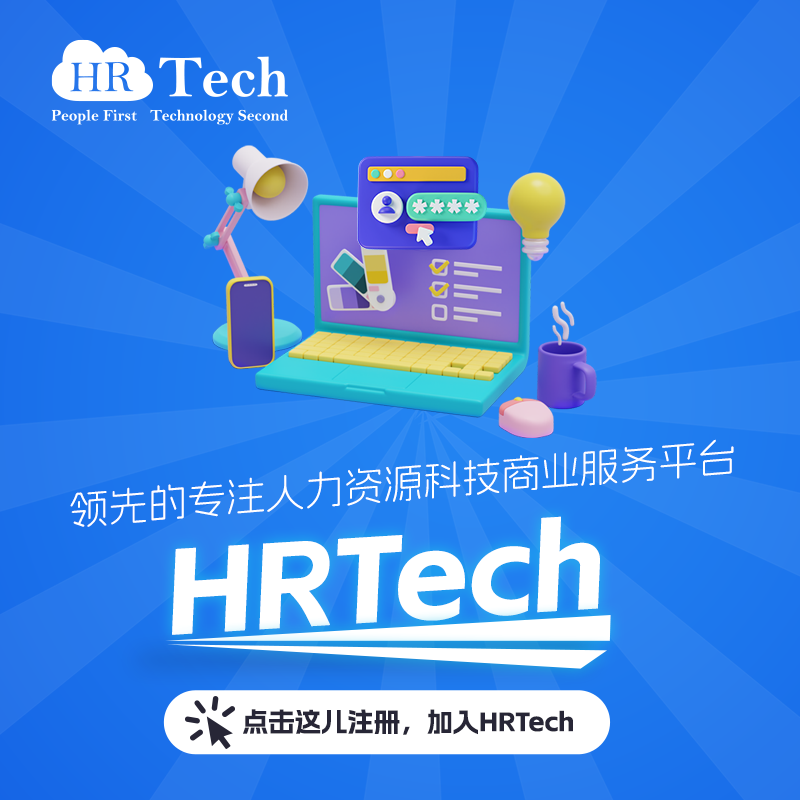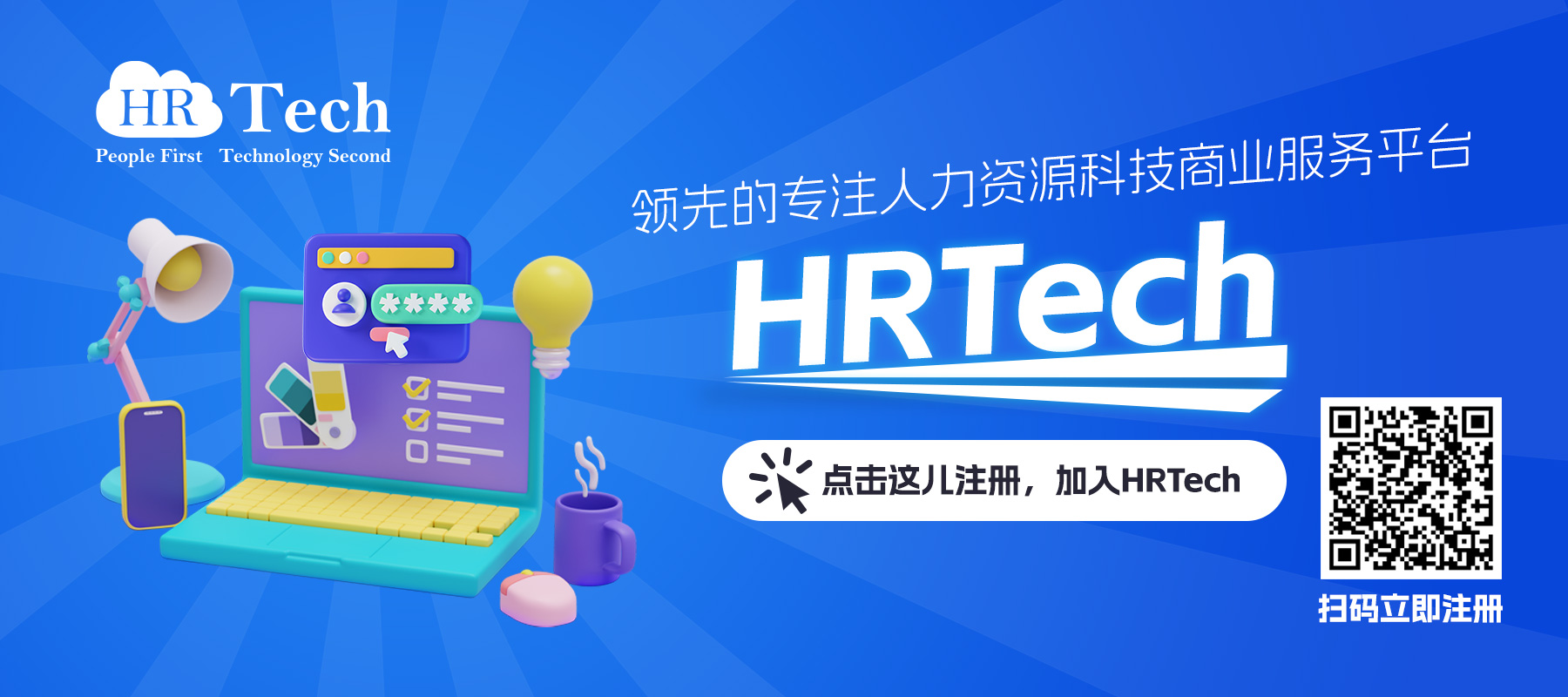-
 员工体验
员工体验
2025年影响人力资源战略的六大趋势
在过去两年里,人力资源的一切都在逐步发生变化--远程或混合工作模式、全球招聘、远程入职,以及对技术的依赖性越来越强。其中许多战略在以前就已实施,但大流行病使其成为主流。除了适应这种转变,全球的人力资源部门还面临着前所未有的挑战,如 “大辞职潮”、员工职业倦怠和心理健康问题的增加,以及与员工参与和留任相关的问题。随着大流行病进入第三个年头,各组织学习并尝试了不同的人力资源战略。虽然人力资源的首要任务会不断调整或演变,但有一点是肯定的:它们将以人为本,以业务为导向。
以下是我们在 2025 年可以看到或继续看到的人力资源战略或趋势清单。
员工福祉与心理健康
2023 年,人力资源战略的核心将围绕员工福利和心理健康展开。大流行病让我们意识到,员工福利和心理健康不再是 “可有可无 ”的福利。相反,它们已成为 “必须拥有 ”的福利和人力资源战略的核心部分。工作压力或个人压力是每个人生活中不可或缺的一部分。近两年来,随着工作和个人生活的相互影响,这种压力有增无减。除了压力,由于对大流行病的担忧,全球每个人还承受着恐惧、焦虑、失眠、偏执、孤独等痛苦。因此,这影响了员工的参与度和工作效率。
但是,在大流行病期间,许多组织都在福利和心理健康方面进行了投资。2020 年,Gartner 对 52 名人力资源进行了调查,结果发现
94% 的组织对其福利计划进行了大量投资
85%的组织增加了对心理健康相关福利的支持
50%的组织增加了对身体健康的支持
38% 的组织改善了对财务福利的支持
调查进一步强调,使用福利的员工中,23%的人心理健康得到改善,17%的人身体健康得到改善。然而,据报告,只有 40% 的员工利用了这些福利。
因此,在 2023 年,企业不仅需要投资于员工的福利或心理健康措施,还要确保他们利用这些措施。只有当这些举措或计划成为人力资源战略和业务目标的核心部分时,才有可能做到这一点。
工作与生活的平衡
工作与生活的平衡对所有人都至关重要,而随着大流行病的出现,这一点变得更加突出。
那些能够在朝九晚五的工作之余关掉屏幕的人很不错!但对其他人来说,如前所述,上班和下班时间变得错综复杂。尽管如此,有些人还是认识到,他们在工作效率高的时间段零散工作的效果最好。尽管如此,从更大的范围来看,在家工作时如何保持工作与生活的平衡一直是个难题。人力资源部门在制定 2023 年有效的人力资源战略时需要牢记这一点。
对一些人来说,工作与生活的平衡意味着花时间陪伴家人;对另一些人来说,工作与生活的平衡意味着沉溺于个人发展或自我保健。工作与生活的平衡能给员工带来满足感和成就感。此外,它还有助于减轻压力和疲劳。最终,能够在工作和生活之间保持协同关系的员工,工作效率更高,参与度更高,每天都期待着工作。
混合式工作将继续发展,Metaverse 将崛起
埃森哲公司(Accenture)最近的一项调查发现,83% 的员工更喜欢在混合环境中工作,63% 的组织已经采用了 “随时随地提高生产力 ”的员工模式。
在全球范围内,过去两年大家的工作方式发生了显著变化。现在,混合工作已成为各组织公认的规范,并将继续存在下去。
混合式工作对雇主和员工都有好处。它让员工可以灵活地在任何地方工作,更好地平衡工作与生活。另一方面,它也降低了员工的间接成本、办公室维护和物流成本。
2023 年,如果混合工作过渡到元世界,会议和其他活动也会发生,我们也不会感到惊讶。人力资源部门必须重新想象大流行后的世界是什么样子,并重新设计和创新人力资源战略。他们需要专注于创造一个公平公正的工作场所,在这里,没有人会因为工作地点而感到被疏远或与外界脱节。无论在哪里工作,每个人都应该有机会使用一套合适的工具,进行有效的协作和沟通。市场上有 Slack、Google Hangouts、Zoom 和许多其他工具,可以帮助您的混合工作场所保持联系。
提高技能和再培训,增强竞争优势和内部流动性
员工的技能提升和再培训一直是核心人力资源战略的重要组成部分。在大流行病盛行的今天,这一点变得比以往任何时候都更加重要。这不仅有利于员工,也有利于组织。员工可以在现有技能的基础上学习新技能,帮助他们在现有工作岗位上成长,或在同一组织中尝试不同的工作角色。访问 Coursera、Udemy 和 edX 等各种教育技术平台可以帮助员工进行技能再培训和技能提升。
技能培训计划向员工表明,企业将他们的利益放在首位。当组织对他们进行投资时,会让他们感到自己的价值和重要性。它能提高员工的参与度,留住员工,并有助于在组织中建立持续的学习文化。另一方面,组织能够从内部弥补岗位需求缺口,而不是从外部寻找。这有助于节省时间和金钱成本。在这个充满不确定性的时代,对员工进行再培训和技能提升有助于建立一支适应未来的员工队伍。对企业和员工来说,这是一个双赢的局面。
打造一支多元化和包容性的员工队伍
Glassdoor 最近的一项调查显示,80% 的亚洲人、70% 的拉丁美洲人、62% 的男性、89% 的黑人和 72% 的女性更喜欢多元化的工作文化。
上述调查清楚地表明了工作场所多样性和包容性的重要性。过去,各组织一直在努力促进 D&I 的发展,但如果到目前为止还没有将其作为人力资源战略的核心部分,那么现在就是将其作为核心部分的时候了。
各组织必须重视给予每个人平等的机会,无论其年龄、性别、性取向、国籍、教育背景、民族、种族、政治信仰等如何。这样,各组织就会拥有更多具有不同技能、能力和经验的人才。它能促进创新和团队合作,有助于提高员工的参与度和留任率。
举例说明: 目前,劳动力队伍中有来自 Z 世代、千禧一代、X 世代和潮一代的员工。放宽年龄雇用标准的组织将拥有一支员工可以根据自身经验相互学习的员工队伍。潮一代可以与他人分享行业知识和经验,与此同时,他们自己也可以弥补数字鸿沟。
人力资源技术软件和工具
面对一支全球化的员工队伍,人力资源团队几乎不可能对他们进行实际管理。因此,人力资源技术工具和软件的使用将呈上升趋势。人力资源技术行业专家 Josh Bersin 预计,全球人力资源技术解决方案市场规模约为 4000 亿美元。随着时间的推移,这个数字只会越来越大。人力资源战略的一个关键部分应该是在日常工作中加入简化员工管理流程的工具。从入职培训到绩效管理,由于大流行病的影响,一切都变得虚拟起来。
HRTechChina每年都会聚合新的一年人力资源发展趋势,2025年的趋势是什么?我们一起来看看各家如何预测!2025年趋势专题地址是:http://hrnext.cn/8dK4a3 可以收藏保存,我们会不断更新全球各地的预测,与你分享,决不可错过!
-
 员工体验
员工体验
Josh Bersin谈:ADP Lyric HCM,众人期待的下一代HR平台
前沿:在2018年,ADP启动了一个旨在彻底改变企业人力资源和薪资管理的项目,名为Lyric HCM。该系统采用灵活的可扩展架构,支持各种员工类型和多管理结构。Lyric HCM结合了AI工具,如ADP Assist,为全球薪资和人才管理提供了全新的解决方案。它拥有实时基准和个性化用户体验,适用于零售、医疗保健等行业,成为了Workday和SAP等主要HCM供应商的有力竞争者。
在2018年春天,Josh Bersin 参加了一个在纽约市举行的保密会议,了解一个名为Lifion的项目。ADP雇佣了一支新的工程团队,秘密进行任务,为ADP在企业市场中的产品打造“下一代平台”。
该系统的设计始于Workday发布的十年后,旨在成为一个高度可扩展、可配置的微服务架构系统,能够管理工资、HR流程以及各类员工的所有人才应用。该系统必须支持动态团队、各种工作模式(全职、兼职、小时工、零工、合同工),并允许公司在其企业职能中管理许多具有不同业务规则和重叠员工的组织结构。
在某种意义上,它是为后疫情时代高度灵活、动态的公司设计的。
除了这种灵活的架构外,系统还设计为支持拥有多个经理(以及多个工时表)的员工,动态重新配置以适应并购或新业务实体,以及全球工资和税务服务,具有公司内可变的自定义业务规则。它需要包括一个招聘模块、目标和绩效管理的多种选择、入职和培训发展工具、出色的报告功能,以及一个易于使用的叙事界面,允许任何员工、经理或HR专业人士使用、配置或在系统上运行报表。
在我最初的会议上,我印象深刻,并且我写了一篇文章描述这个项目。今天,几乎六年后,该产品有了一个名称(ADP Lyric HCM),并已向拥有1000多个客户账户的ADP客户全面开放。
如今,ADP拥有120多个大型客户账户,因此该系统已被验证。自成立以来,Lyric HCM已融合了大量AI功能(ADP Assist与SAP Joule一样,是真正的AI界面),并且从ADP的数据云中获得了基准信息。
换句话说,该系统有潜力成为市场上的“下一代”HCM平台。
ADP在宣布什么及提供什么
核心HR系统需要执行很多任务。不仅要管理工资、福利和税务规则(在全球不断变化的监管环境下),它还必须灵活、易于配置,并且充满员工和HR易于使用的界面。通过“灵活”我指的是系统必须能够轻松创建新的组织结构,移动员工,并为“经理”或主管创建多种模式。
几乎所有传统的HCM供应商,Workday、Oracle和SAP,都不是以这种方式设计的。这些供应商构建了合同工附加功能,但在大多数情况下,当你想要简化组织结构、与另一家公司合并或重组角色时,过程非常困难。简化组织通常意味着“重新实施”你的HRMS。大多数公司每十年才这样做一次。
ADP Lyric HCM旨在解决这个问题。想象一下像Gold’s Gym这样的公司,公司不断开设新健身房并雇佣新经理,员工同时向多个经理报告。
我与Gold’s Gym进行了交谈,正如你所想,公司在疫情期间经历了一次转型。Gold’s最初是南加州的健身公司,Gold’s被收购,现在是一个全球组织,扩展到许多新业务。设施被整合,每个本地健身中心都具有很大的管理自主权。
例如,一个在一个健身房担任教练的员工可能还在另一家健身房担任教练或支持人员,并且有另一个经理。这种“以工作为中心”(而非“以职位为中心”)的操作模式变得非常普遍。Lyric HCM支持这些多管理模式的工作模型,包括绩效管理、时间追踪和合同工的功能。
想一想任何零售商、医疗公司或其他高度分散的运营。一个Gold’s Gym可能以一种方式支付加班费,而另一个可能以不同的方式支付。你可以想象各种情况。每个公司都有类似的情况。
我最近在Rolls-Royce,他们正在将工程团队从产品组中集中起来,使30%至40%的工程师成为“浮动人员”。Rolls拥有与政府和商业客户的大量合同,每个合同都有不同的财务模型。他们需要这样的系统,就像健身房、餐饮连锁或老年护理网络一样。
还有更多。除了这些HRMS和全球薪资功能之外,ADP还构建了一个员工体验平台、员工通讯系统和学习与发展系统。你只需输入像“我要结婚”这样的查询,系统就会显示一个页面,将任务和资源整合在一个地方。如果HR经理想要“发放奖金”,系统会询问哪个组织,显示人员名单,并允许经理定义奖金,而不必四处寻找菜单和面板。
下一代方法的亮点
由于该系统是在AI时代架构的,它从一开始就具有一些非常独特的功能。
首先,在灵活性方面,这是一个“以人为中心”的架构,而不是“以角色为中心”的架构。仅此一项功能就使所有这些特性成为可能。
其次,在可用性方面,该系统是我见过的最“AI驱动”的界面之一。虽然大多数HCM都在构建助手以加速交易流程,但Lyric HCM实际上会“学习”你正在尝试做的事情,并通过流程提示你。请记住,这些HCM系统非常复杂(Workday的“用户指南”有2500页),因此我们希望系统感觉易于接近而不是令人生畏。
正如您从此幻灯片中看到的,ADP还提供嵌入式基准以及提醒引擎。基准来自ADP的数据云,为公司提供最新的按职位和级别划分的薪资范围和其他指标(其他HCM平台没有这个功能)。提醒引擎用于Lyric HCM的入职和发展系统,提醒用户他们需要执行的任务或活动。
ADP Assist是该公司的生成式AI工具,允许你询问任何员工或团体、法律和税务问题以及工资或财务数据。它非常强大,我认为它可以与Joule媲美,成为HCM的会话界面。
第三,该系统为员工提供了一个新颖且易于使用的界面。系统不会向员工提供各种“中心”或“门户”来查找内容,而是足够智能地为员工提供它认为他们需要的内容。像更改家庭状况或地址、查看福利或薪酬等典型的HR事务都很简单。面向薪资或税务经理的基于角色的仪表板也经过了专门设计。任何HR专业人士都可以根据自己的需要自定义界面。
由于系统高度动态,用户可以设置智能报表和其他视图,以查找他们感兴趣的数据和组织单元。ADP还构建了一个管理人员发展工具(用于指导新晋升的主管发展),一个入职系统,以及许多用于绩效和目标管理的功能。
未来方向:ADP服务
当我们考虑ADP的平台时,我们必须记住,ADP不仅仅是一家云软件公司。公司的大部分收入来自服务:工资、PEO和围绕这些产品的许可费用。这意味着ADP的销售和服务组织非常以服务为中心,并且在HR的各个领域都经过了高度培训。(大多数HR软件销售团队并不是HR领域的专家。)
为了支持Lyric HCM,公司组建了一支全球服务团队,并结合了专门的客户成功经理,以确保每个客户都有一个个性化的、以成果为基础的实施计划。这意味着ADP Lyric HCM不仅仅是一个出色的平台,还是一群人帮助进行配置、利用、集成和长期规划。ADP正开始与集成商合作,但很可能会自己处理大多数客户实施。
对市场的影响
目前,Lyric HCM定位为面向美国总部的全球劳动力中型至大型公司的产品。这意味着Lyric HCM直接与UKG、Ceridian、Workday、Oracle、SAP以及像Darwinbox、HiBob(正在上移市场)、Lattice等供应商竞争。“支付”类公司(如Paychex、Paycor、Paycom)主要专注于小型公司,但随着它们的发展,它们可能也会成为竞争对手。
这并不意味着ADP能够满足每个客户的需求。这些平台需要多年才能成熟,每个供应商都有不同的行业和重点功能。目前,我相信ADP最有可能在零售、酒店、医疗保健和其他分散的小时工公司中取胜。鉴于ADP对中小型企业的关注,ADP需要时间才能接触到大型公司。
尽管如此,是时候改变HCM了。为灵活性而设计,并融合AI,ADP Lyric HCM展示了我们一直在寻找的未来。
-
 员工体验
员工体验
ADP重磅推出AI驱动HCM平台:Lyric HCM,赋能全球人力资源管理
刚刚,ADP宣布推出Lyric HCM,这是一个融合了生成式AI(GenAI)的全球化人力资本管理平台,旨在通过灵活性、智能化和以人为本的设计提升员工体验。Lyric HCM可以帮助企业应对全球员工管理的挑战,提供个性化的服务,并支持在75个以上国家的薪酬管理。Lyric还利用预测分析、实时洞察和异常检测,帮助企业做出更明智的决策并提升效率。
ADP全球产品与创新总裁Sreeni Kutam指出,现代企业需要具备适应性和合规管理能力的工具,而Lyric通过结合ADP庞大的数据集,提供灵活的解决方案,满足了企业不断变化的需求。同时,全球人力资源行业分析师Josh Bersin也强调,Lyric HCM超越了传统的人力资源管理系统,能够帮助员工更高效地完成工作并提升整体工作体验。
Lyric的云原生设计、强大的移动体验以及对GDPR等合规要求的支持,使其成为全球大型企业的理想选择。此外,Lyric可以灵活适应各种企业结构和工作流程,帮助企业无缝扩展并提供个性化的员工体验。
视频可以访问视频号:HRTech
ADP Lyric HCM利用生成式AI (GenAI) 提供个性化的全球员工体验
新泽西州罗塞尔,2024年9月23日 - ADP®今日宣布推出ADP Lyric HCM,一个专为满足现代化劳动力不断变化需求而设计的人力资本管理(HCM)平台,涵盖全球HR、薪酬和服务功能。Lyric通过结合灵活性、智能化和以人为本的设计,提供了一个革命性的解决方案,提升了全球范围内的员工体验。
"Lyric为现代工作场所设立了新标准,将先进的HR技术与高度个性化的方法结合在一起," ADP全球产品与创新总裁Sreeni Kutam表示。 "今天的劳动力是灵活且全球化的。企业需要工具来高效管理他们的全球员工,确保合规并具备洞察力。Lyric通过结合行业领先的生成式AI技术与ADP独有的大数据,提供了灵活、智能且以人为核心的HCM解决方案。"
在当今动态的商业环境中,大型企业需要能够快速适应变化的HCM系统。分散的技术往往妨碍HR部门对全球员工数据的全面掌握。随着法规不断变化,企业需要一种设计能够帮助他们主动管理合规的系统。此外,今天的技术娴熟员工期望个性化、实时的服务来解决问题并做出明智决策。
Lyric通过一个一体化的HCM解决方案应对这些挑战,其特点包括:
灵活性:能够轻松操作,适应企业独特的结构、工作流程和实践,无需遵循固定的方法。
智能性:通过预测分析、实时数据洞察、趋势预测、异常检测和个性化建议,提升决策能力并提高运营效率。
人性化:为员工提供个性化的、与其职业发展阶段相符合的体验。
全球性:ADP Lyric HCM支持75多个国家的工资发放,且每个季度会拓展更多地区。
大型企业可依赖Lyric的云原生设计及强大的安全机制,帮助其遵守严格的GDPR及其他合规要求。Lyric提供响应式网页及强大的移动端体验,使其无论何时何地都可以轻松访问,帮助企业扩大规模,管理全球员工并提供服务。
"当今的企业需要一种全新的、灵活易用且融合了AI技术的HR软件,"全球HR行业分析师Josh Bersin表示。 "ADP的Lyric HCM为动态企业量身打造,围绕团队而非层级结构,具备管理新型工作世界的能力。Lyric不仅仅是HR管理工具,还能够使员工的工作更加轻松高效。凭借其先进的智能技术、个性化设计和全球可扩展性,Lyric已成为解决当今HR挑战的首选工具。通过提升人性化体验,Lyric帮助企业有效管理其全球团队,提供适应各自需求的解决方案。"
"Lyric HCM让我们能够实现无缝扩展,"Capstone Logistics的执行副总裁Tom Peot表示。 "我们最近在有机增长和并购方面都有显著发展。Lyric帮助我们保持灵活性,并提升了以往无法实现的效率。"
欲了解更多关于Lyric功能的信息或安排演示,请访问 ADP.com/lyricHCM。
关于ADP (纳斯达克: ADP)
通过尖端产品、优质服务和卓越体验,ADP致力于设计更好的工作方式,帮助人们充分发挥潜力。涵盖HR、人才管理、时间管理、福利和薪酬。由数据驱动,以人为本。了解更多信息,请访问 ADP.com。
ADP,ADP徽标和Always Designing for People是ADP, Inc.的商标。其他所有标志均为其各自所有者的财产。
版权所有 © 2024 ADP, Inc. 保留所有权利。
-
 员工体验
员工体验
Workday发布全球劳动力报告:顶尖人才难寻,留住更难
根据Workday的全球劳动力报告,当前的就业市场呈现出雇主优势,因求职申请量激增、职位要求提升,求职者面临挑战。同时,尽管总体离职率较低,但高潜力员工的流失率正在上升。报告建议,企业应通过以下策略应对挑战:重建信任,增强工作透明度;提升工作的意义,消除低效会议和繁琐流程;根据员工任职时间个性化员工体验;战略性应用AI技术以优化招聘、发现人才并促进内部流动。最终目标是创造一个稳定而富有韧性的高绩效团队。
就业市场正在快速发展。虽然招聘活动正在回暖,但 Workday 平台的洞察以及我们与 Hanover Research 共同开展的一项研究表明,这是一个雇主主导的就业市场。点击获取Workday全球劳动力报告
但这并非没有挑战。申请人数之巨意味着顶尖人才在众多应聘者中难以找到,而现在有迹象表明高潜力员工开始离开,顶尖人才将更难留住。
影响劳动力的主要趋势
2024 年上半年,求职申请的增长速度是招聘需求的四倍。随着求职申请的速度超过招聘需求,很明显,在这个求职者密集的市场中,雇主的选择更多,而雇员的选择更少。如果就业增长继续放缓,失业率在美国和全球范围内持续上升,这种情况将变得更加明显。
认为自己正在做有意义的工作的员工比没有这样做的员工感觉更有成就感 37%,即使在员工称之为“具有挑战性”的工作量下也是如此。
在下面的图表中,请注意只有一个行业的每个职位空缺申请人数较少:
我们也发现雇主提高了经验要求,59% 的受访者表示,这一趋势在未来 12 个月内可能会持续下去。这会使问题更加严重,求职者找工作更加困难。
最终我们发现:
招聘人数在增加,但风险也在增加。职位空缺在增加,申请也如潮水般涌来。随着申请者人数的增加,雇主也提高了门槛,要求应聘者拥有更多的经验和资格。这让求职者,尤其是那些转行的人,求职变得更加困难。
顶尖人才正在流失。令人惊讶的是,鉴于目前的招聘环境和整体自愿离职率较低,75% 的行业报告称高潜力员工的离职率有所增加。这意味着公司需要格外警惕,以留住明星员工。
有意义的工作是不可商榷的。员工不只是在寻求薪水。他们希望感受到自己的工作很重要。事实上,认为自己在做有意义的工作的员工比那些不这样做的员工感觉更有成就感 37%,即使在员工认为“具有挑战性”的工作量下也是如此。
内部流动是双赢的。在组织内部提供成长机会不仅可以提高员工满意度,还可以帮助您保留宝贵的技能和知识。
令人惊讶的是,考虑到当前的招聘环境以及整体自愿离职率较低的事实,75% 的行业报告高潜力员工的离职率有所增加。
企业领导者能做什么?我们对报告进行了更深入的探讨,但总体而言,雇主应该:
通过透明度重建信任。 雇主不仅要向员工提供明确的指导,还需要解释提出要求背后的“原因”。例如,如果期望拥有高绩效文化,则要对其进行衡量,并将数据提供给个人、团队和领导者——如果所有人都在查看相同的信息,那么每个人都更容易朝着目标迈进。
让工作变得有意义。 消除完成好工作的障碍——例如无用的会议、繁琐的流程和有限的自主权。然后,与上述通过透明度重建信任相关,确保每位员工都知道他们如何为公司的目标做出贡献。
根据员工任职年限个性化员工体验。 改进员工体验以适应不断变化的员工需求和愿望;因此,您将在员工保留率和生产力方面获得巨大回报。
战略性地拥抱人工智能。 人工智能可以帮助招聘人员优化招聘、发掘隐藏人才并促进内部流动。此外,组织可以使用人工智能来改善工作流程,使管理人员更轻松地管理日程安排,并帮助员工找到所需的信息 - 无论是总结长时间的对话还是快速找到薪酬和福利问题的答案。
未来之路
工作世界正在不断演变,大家一致认为我们需要找到一个稳定的中心。我们还需要达到这样的程度:企业可以实现所需的结果,员工可以获得所需的支持,即使在偶尔繁重的工作量下也能脱颖而出
为了蓬勃发展,公司必须优先考虑员工的需求,并培养信任和成长的文化。通过关注这些关键领域,您可以打造一支坚韧、敬业、高效的员工队伍,为迎接未来做好准备。
-
 员工体验
员工体验
薪资福利管理软件公司Zellis Group收购员工福利管理软件供应商Benify,改革全球福利软件
Zellis Group(或 “公司”)是 Apax Partners LLP(“Apax”)旗下基金投资的一家提供人力资源、薪资和福利管理软件的公司,从 Vitruvian Partners 收购员工福利管理软件供应商 Benify。作为交易的一部分,Benify 将与 Zellis 集团的福利管理和员工参与软件业务 Benefex 合并,Vitruvian Partners 将与 Apax 基金一起成为 Zellis 集团的少数投资者。
Benefex和Benify合并后将成为全球领先的福利、奖励、表彰和员工参与软件供应商,为全球客户提供更高的价值主张。Benefex和Benify具有很强的互补性,此次收购将通过扩大的地理网络、增强的产品组合和更广泛的服务范围,创建一个真正的全球性解决方案。 两家公司的合并将使客户受益于人力资源、薪资和福利承运商方面更深入的平台集成套件。此次收购正值全球雇主加快技术投资步伐,以创建福利和奖励方面的全球统一体验,并以消除管理和确保合规为基础。
Benefex 于 2018 年被 Zellis 集团收购,自此经历了快速的全球增长,通过其现代福利管理、中介和参与产品为客户提供卓越的员工体验。
Benify 成立于 2004 年,是福利管理软件服务的先驱,如今通过全球启用的 SaaS 平台提供一流的福利和整体奖励解决方案。自2011年起,Benify在维鲁维安的控股下实施了一项长期发展投资计划,现已从一家专注于瑞典市场的企业发展成为该领域的全球性企业。
Benefex和Benify合并后,将为100多个国家的3000多家公司提供支持,通过现代福利、福利、经纪、奖励和认可以及通信产品,改变和调整500多万名员工的体验。两家公司携手合作,将能更好地提升全球员工的体验。
Benefex 首席执行官 Matt Macri-Waller 说: “这次合并为Benify和Benefex的新客户和现有客户提供了机会,我们对此感到非常兴奋。我们的共同目标是为我们的客户提供真正全球化的卓越员工体验,此次收购将发展我们产品和服务的全球能力,同时汇聚两家公司的人才优势。
Zellis集团首席执行官John Petter补充说:"这标志着Zellis集团翻开了激动人心的新篇章,也是Apax基金对我们持续发展承诺的早期体现。
Benify 首席执行官 Joakim Alm 评论说: “我们期待着加入Zellis集团和Benefex公司,共同打造HCM软件领域的领先企业。通过结合我们各自的优势,我们将进一步扩大我们的产品、服务以及对客户及其员工的价值。此次交易证明了Benify通过向客户提供世界一流的解决方案实现盈利增长的业绩记录,也证明了我们整个团队的辛勤工作和奉献精神。我们非常感谢 Vitruvian 在过去十年中为我们提供的支持,加速了我们的国际增长之旅"。
Apax 负责人 Adam Garson 说: “当 Apax 基金投资 Zellis 集团时,我们发现了一个加速 Benefex 增长的机会,并帮助该公司在庞大、分散且不断增长的全球福利管理软件领域成为领先的供应商。与Benify的合并是这一发展历程中的一个重要里程碑,我们期待着与Zellis集团、Benefex和Benify的团队合作,共同完成两家公司的合并。
Vitruvian Partners合伙人Jussi Wuoristo说: “我们很高兴看到Benify迄今为止所取得的卓越发展,这要归功于Benify管理团队、创始人和员工多年来的不懈努力。自我们投资以来,Benify 的规模有机地扩大了数倍,并因此成为该领域的全球强势企业。我们很高兴能够作为 Zellis 集团的小股东继续支持该公司,并对未来的发展充满热情。
Zellis Group 的顾问包括 Arma Partners、Evercore 和 Kirkland & Ellis。德意志银行和鸿鹄律师事务所为 Benify 和 Vitruvian 提供了咨询服务。拟议交易的完成取决于惯例成交条件。财务条款未披露。
-
 员工体验
员工体验
流动学习: 从单一培训到持续发展
我们的工作方式正在发生变化。对许多人来说,工作不再局限于特定的、共享的地点或一天中的特定时间。技术进步消除了界限,使工作可以跨越不同地点和时区。全职和兼职员工越来越多地与合作伙伴、承包商和自由职业者作为一个团队无缝合作。总之,混合式工作将继续存在。现在,混合学习必须成为新常态。
流畅学习注重技能,而不是职称
工作场所优先事项的变化,以及日益严重的人才短缺,促使企业从传统的以工作为中心的学习和发展计划转向更加注重技能的方法。现在,人们越来越认识到技能在帮助员工和企业取得成功方面的重要性。以技能为导向的招聘大行其道:LinkedIn 最近的数据显示,现在有 40% 的招聘者在通过该平台进行招聘时会使用技能信息,比前一年增加了 20%,而且这种以技能为导向的方法正在发挥作用,招聘成功率提高了 60%。
在远程工作和工作角色不断变化的背景下,流体学习要想取得成效,就必须做到动态、个性化和随时随地。最重要的是,培训必须与现实世界的影响挂钩,而不是与课程完成率挂钩。换句话说,学习的内容和交付必须是流动的,但要始终关注业务指标。
混合工作方式如何为混合学习铺平道路
随着工作方式的改变,我们的培训和发展方式也在不断演变。混合工作方式不仅改变了工作的方式、时间和地点,也改变了工作的 “内容”。角色变得更加分散、流动和以技能为基础。此外,这些技能也变得更加短暂。现在,工作场所技能的半衰期通常为五年,技术技能的半衰期甚至只有两年半,而技术技能往往是需求量最大的。因此,提高劳动力技能是企业的当务之急,也是未来竞争力的一个条件。
为了在日益混合、分布式的工作环境中解决人才和技能缺口问题,学习与发展正变得更加灵活和动态。例如,企业现在正致力于创建学习内容,这些内容不仅要与具体的技能差距和工作角色相关,而且还要能在不同的环境中使用,无论员工是在办公室、家里还是在移动中。这种无边界方法可确保学习和发展无缝融入日常工作流程,而不受员工实际工作地点的限制。
此外,这一趋势还凸显了摒弃僵化的内容分发方式的重要性。另一项研究显示,如果有具体的课程建议帮助员工实现职业目标,54% 的员工会花更多时间学习。学习内容必须是动态的,并根据每位员工的独特需求量身定制,同时考虑到他们的具体工作角色、工作地点和当前工作状况。这可能意味着为员工提供一口式学习模块,让他们在短暂的休息时间进行学习,或者提供更深入的培训,让他们在较长时间的专注工作中进行学习,甚至通过基于人工智能的助手进行持续的在职培训。这样做的目的是以一种与混合世界中不断变化的工作性质相一致的方式支持持续学习和绩效提升,确保员工拥有在其岗位上取得成功所需的灵活性和资源。
人工智能在推动有效学习方面的作用
不同员工的培训需求千差万别。例如,数字原生的 Z 世代可能会本能地掌握其工作的数字方面,但在掌握谈判、网络和公众演讲等软技能方面需要额外的支持。利用人工智能驱动的洞察力,企业可以了解员工最需要的特定技能,并据此有针对性地开设课程。人工智能处理和解释非结构化反馈和绩效数据的能力,对于创造这些有针对性的学习机会至关重要。考虑到开发人员在某个项目上的工作: 人工智能系统可以分析他们参与项目的情况,并推荐专业课程,以更新他们在关键领域的编码知识。通过根据实时工作表现和兴趣提供量身定制的学习资源,人工智能不仅能促进技能发展,还能使学习与当前的行业趋势和组织目标保持一致。
除了更智能的内容选择和交付外,工作场所培训计划现在还以许多创新方式使用人工智能。例如,人工智能的自然语言处理能力使其成为模拟现实生活场景的理想选择,这些场景可根据个人学习需求进行无限调整,而虚拟和增强现实技术则为员工提供了无与伦比的培训机会。
流畅学习,打造敏捷、基于技能的未来
随着混合式、分布式工作的引入,以及从传统的以工作为中心的学习模式向以技能为基础的战略转变,工作场所的学习与发展发生了重大变化。为此,学习与发展计划变得更加灵活、个性化,并可随时随地获取。现在,学习与发展需要以适合员工个人或团队的方式融入日常工作流程,以反映无边界的工作场所。然而,流动学习也必须有针对性、可扩展,并与业务目标保持一致。为了实现这一目标,学习与发展平台正在越来越多地创新性地使用人工智能。人工智能能够根据个人的需求和偏好进行情境化学习,帮助企业为员工提供更具影响力的体验,进而提高企业的盈利能力。
-
 员工体验
员工体验
AI助力:减轻人力资源与员工培训的工作负担
九月的一个周日傍晚,天色已晚。按理说,你应该舒舒服服地躺在沙发上,沉浸在最新的狂欢剧集中。尽管屏幕上的情节跌宕起伏,但你通常在周末结束时进行的逃避现实的活动却无法吸引你,因为你无法摆脱未来一周令人生畏的前景。
明天早上,15 名新招聘的毕业生将在同一天开始工作,所有人都要在你的系统上进行设置,所有人都急需支持和个人关注,所有人都需要在今年结束前取得成果并向客户收费。
是的,你是团队中的一员,但你能为这些新员工提供的一对一服务是有限的,同时还要满足已经相当庞大的员工队伍的需求。
对于从事人力资源工作的人来说,这种令人焦虑的情景(或主题的变体)并不陌生。
当然,这并不全是坏事。
一方面,有两点很可能是令人欣慰的:1)在招聘过程中,你或人力资源部门的其他人会有时间与他们单独交谈,今后也会有机会再这样做;2)他们会希望他们的一些培训和日常询问完全由内部在线平台处理,无需人工输入。
但另一方面,还有一个巨大的灰色地带,那就是更多的个人接触,虽然不是必要的,但也是很好的选择,而且是最好的雇主所提供的--只要你有资源......但许多部门都没有。
人工智能已应用于当今的人力资源领域
好消息是--无论它是用于提供反应性材料以补充知识库或内联网,还是用于主动培训或在招聘过程中提供帮助、为管理人员提供信息、访问 IT、填写假期表格、绩效考核、薪酬门户、费用等,你说得出来--人工智能(AI)的进步正开始让时间和资金短缺的人力资源专业人员的生活变得无比美好--尽管这项技术永远不会也不应该完全取代你。
当然,人们也希望人工智能能为人力资源、员工培训和技能提升带来变革潜力,从而重塑劳动力管理和技能发展; 例如,Gartner 最近发现,超过四分之三(76%)的人力资源领导者认为,如果他们的组织在未来 12 到 24 个月内不采用和实施人工智能解决方案(如生成式人工智能),那么他们的组织成功率将落后于那些采用和实施了人工智能解决方案的组织,而参加该技术研究咨询公司一月份基准会议的 34% 的人力资源领导者表示,他们正在探索生成式人工智能的潜在用例和机会。
那么,这些潜在用例是什么呢?在过去的一两年里,有三大领域引起了我的注意:
招聘
在招聘和录用方面,人工智能驱动的重复性人工任务自动化大大减少了人力资源团队处理和审核候选人的时间。通过生成定制的沟通序列,并使用大型语言模型(LLM)来创建看似定制的职位描述和面试问题,这种技术可以提高参与度和回复率。人工智能还可用于跟踪和分析转换率,帮助招聘经理确定和完善他们的推广策略,只关注那些能够实现目标的策略。
监测
监测绩效、参与度和行为,为人力资源团队提供即时见解,是当今人工智能的核心优势。通过分析存储在系统中的员工数据类型(如电子邮件、Teams 或 Slack 聊天记录)和工作模式信息,这些系统可以标记出负面指标。尽早发现这些问题并在问题升级之前采取干预措施,显然符合公司的利益。
内部流动
最好的公司都会从自己的员工队伍中向上招聘。问题是,这一过程往往是在员工偶然发现空缺职位并做出反应时才启动的,而不是相关方面鼓励他们申请,这意味着机会往往被错过。人工智能辅助系统利用用于监控员工的类似技术,弥补了这一不足,并向繁忙的人力资源团队提出内部甄选建议,节省了时间和外部招聘人员的成本。
在入职培训、学习与发展等其他关键领域,市场上还有许多令人印象深刻的应用,但它们都有这些共同的好处:提高效率、决策更可靠、信息更灵通,当然还有减少支出,更不用说同事们会享受到有助于留住人才的积极体验。
那么,有什么好处呢?
未来的创新
这让我想到了人工智能在人力资源领域的未来。这并不难理解;我们正处在一个上升的轨道上,在这个世界里,人工智能,尤其是生成式人工智能,将使我们的生活变得更加轻松。
但我要提醒大家:人工智能的问题不在于它能做什么或不能做什么。好吧,在减少文本输出中的 "幻觉 "和在图像中再现看起来真正属于人类的手方面,仍然存在一些磨合问题。但是,我们还需要对用户进行全面的教育:我们还不清楚哪些是人工智能制造的,哪些不是,这可能会带来危险。对于人工智能生成的内容,我们必须培养一种透明和诚实的文化。
无论是在招聘材料、内部沟通还是其他任何与人力资源相关的文件中,我们都必须直言不讳地说明哪些内容是由人工智能生成的。这种透明度不仅能建立信任,还有助于对人工智能的能力和局限性设定切合实际的预期。
最后,我想简单介绍一下 Rapport 公司,看看它的技术是如何通过动画头像帮助员工发展的。
不过,它们确实为某些类型的交互带来了新鲜和令人振奋的体验。
举一个常见的例子,培训和技能提升。员工希望在培训过程中与聊天机器人对话,并与人力资源系统进行其他互动。他们不太习惯的是虚拟互动人物--或者说 VIP。VIP具有自动语音识别功能,由Rapport用户在一个简单易用的平台上构建,可与ChatGPT等软件和用户自己的系统进行简单的插件和集成,VIP具有量身定制、用户自定义的面部表情、准确的唇语和自然的手势,以及检测和响应情绪的能力。
与其他人工智能增强系统一样,VIP 也会利用您的信息。但改变游戏规则的不同之处在于它们如何为员工体验注入活力。
更专业的可能是这个使用案例: 人力资源专业人员与动画化身对话,动画化身代表他们正在与之进行艰难对话的员工--艰难的审查、纪律听证会、让他们申请的晋升失败等等--他们需要在真正对话前进行练习和培训。
诸如此类的创新代表着人工智能的未来;在这令人兴奋的起步阶段,它们也代表着现在。
-
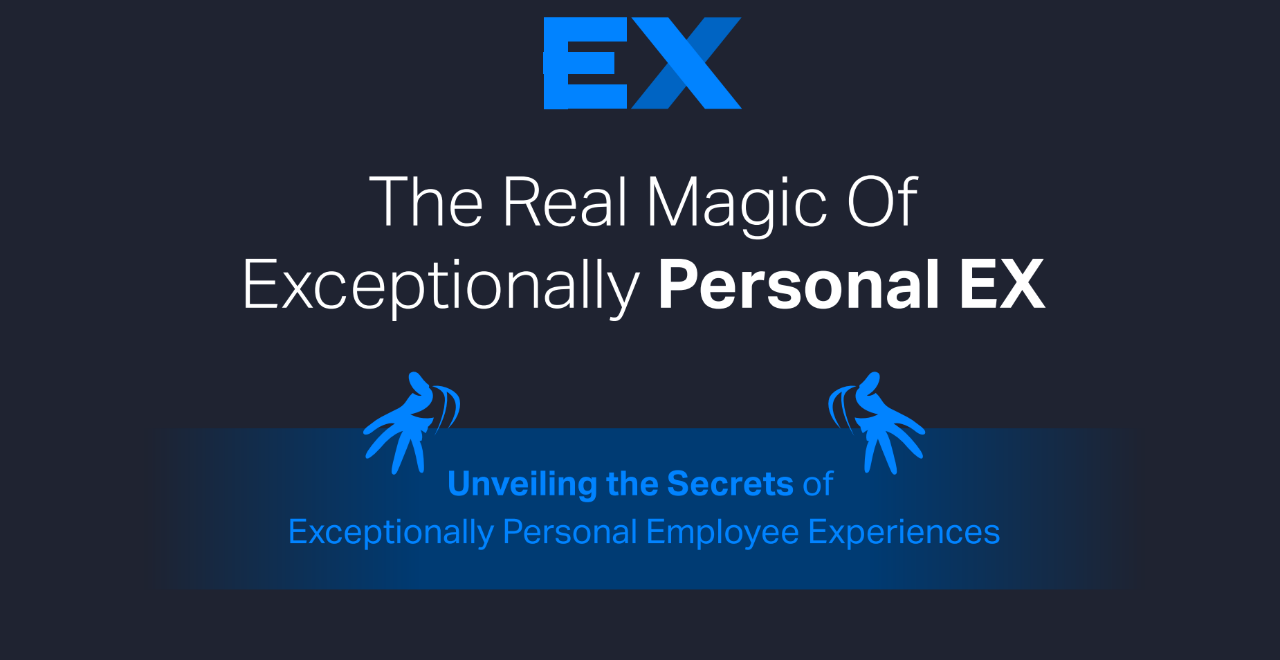 员工体验
员工体验
AI驱动的个性化员工体验—探索《24-25员工体验指南》的核心要点(附录下载)
在现代企业管理中,员工体验(Employee Experience, EX)已成为提升生产力和员工满意度的关键因素。《员工体验指南》 深入探讨了如何利用AI和HR技术实现个性化的员工体验,提供了一套系统的方法和实际案例,为HR从业者指明了方向。本文将从20个核心内容出发,全面介绍该指南的主要观点和实用建议。
个性化员工体验的重要性
个性化员工体验旨在通过理解和满足员工的个体需求,提升他们的工作满意度和整体幸福感。指南指出,个性化体验不仅能带来更高的生产力,还能改善员工健康,促进公司更快增长。
个性化EX的三大支柱:同理心、设计、参与
指南强调,同理心、设计和参与是实现个性化员工体验的三大支柱。这三大支柱共同作用,帮助企业打造独特且高效的员工体验。
同理心的力量
同理心是理解和回应员工情感和需求的关键。通过定期的脉搏调查和幸福感调查,HR团队可以深入了解员工的真实感受,及时调整策略,满足员工的需求。
设计的力量
设计是将员工需求转化为实际体验的过程。指南建议,HR技术应具备模块化、灵活和可扩展的特点,以便根据员工的个体需求进行定制化设计。
参与的力量
参与是提升员工体验的重要环节。通过引入AI语音助手和聊天机器人等技术,HR互动变得更加流畅和直观,大大提升了员工的参与度。
技术在个性化员工体验中的作用
现代HR技术在实现个性化员工体验方面发挥着至关重要的作用。技术不仅帮助理解员工的感受和需求,还能设计和提供个性化的解决方案。
AI驱动的工具和功能
指南详细介绍了AI驱动的工具,如情感分析、日常脉搏调查和幸福感调查,帮助HR团队收集和分析员工数据,以便更好地满足员工需求。
实际应用案例
指南中提供了多个实际应用案例,展示了不同组织如何通过AI和HR技术实施个性化员工体验。这些案例包括不限带薪休假、个性化入职体验和集中查询解决方案等。
HR技术的设计原则
指南强调,HR技术应具备模块化、灵活和可扩展的特点,以便根据不同组织的具体需求进行调整和定制。
增强员工参与度的方法
通过引入社交网络、AI语音助手等技术,HR团队可以提升员工的参与度,使员工能够随时随地访问最佳体验。
奖励与认可计划
指南指出,AI驱动的奖励与认可计划可以显著提升员工的参与度和满意度。例如,每月75%的员工进行认可,进一步激发了员工的积极性。
设置OKR绩效管理框架
指南建议企业设置OKR(目标与关键结果)绩效管理框架,以便更好地衡量和提升员工的绩效和参与度。
个性化员工政策和流程
通过灵活的系统架构,HR团队可以实施独特的以员工为中心的政策,如不限带薪休假和弹性工作时间,以更好地满足员工的个体需求。
倾听员工声音的方法
指南提供了多种倾听员工声音的方法,如员工调查、脉搏调查等,帮助HR团队深入了解员工的真实需求和感受。
数据驱动的决策
通过收集和分析员工数据,HR团队可以做出更为准确和及时的决策,提升员工体验的效果和效率。
提升员工幸福感的策略
指南中提到,通过理解和满足员工的个体需求,企业可以显著提升员工的幸福感和满意度,从而促进组织的长期发展。
实施个性化体验的挑战和对策
虽然实施个性化员工体验面临一定的挑战,但指南提供了多种解决方案,如利用AI技术和模块化HR系统,帮助企业克服这些困难。
长期战略规划
指南建议企业制定长期的战略规划,确保个性化员工体验的持续改进和优化,从而保持竞争优势。
未来展望
个性化员工体验是未来HR管理的趋势。指南指出,通过不断创新和优化,企业可以实现更高的员工满意度和组织绩效。
20.参加员工体验奖项评选
参加员工体验奖项评选能显著提升企业声誉,展示企业文化与员工关怀,增强员工满意度与忠诚度,并吸引优秀人才加盟。参评过程不仅是一个学习与改进的机会,还能激励企业持续创新和优化员工体验管理水平,从而在行业内树立标杆,保持竞争优势。通过参评,企业不仅获得外界认可,也能为未来的发展注入新的活力和动力。
推荐下载《员工体验指南》,(复制链接 http://hrnext.cn/wiOeK3 到浏览器打开进行下载)
通过下载和阅读《员工体验指南》,HR从业者可以获得丰富的实用建议和成功案例,帮助他们更好地理解和实施个性化员工体验策略。
总结而言,《员工体验指南》为HR从业者提供了一套系统的方法和实用工具,通过AI和HR技术实现个性化员工体验。我们强烈推荐大家下载并阅读该指南,以获取更多关于如何提升员工体验的宝贵见解。
关于HRTech
HRTech 领先的专注人力资源科技商业服务平台,作为HR领域唯一深度垂直独立的第三方专业服务机构,致力于推动人力资源科技进步与发展,持续引领行业新科技新趋势新产品新方向。
HRTech核心报道HR科技创新企业与产品,关注并实时分享全球的人力资源科技资讯。定期发布行业市值榜单和HR科技云图,持续举办高品质的专业前沿峰会论坛,表彰认可业内先进。
-
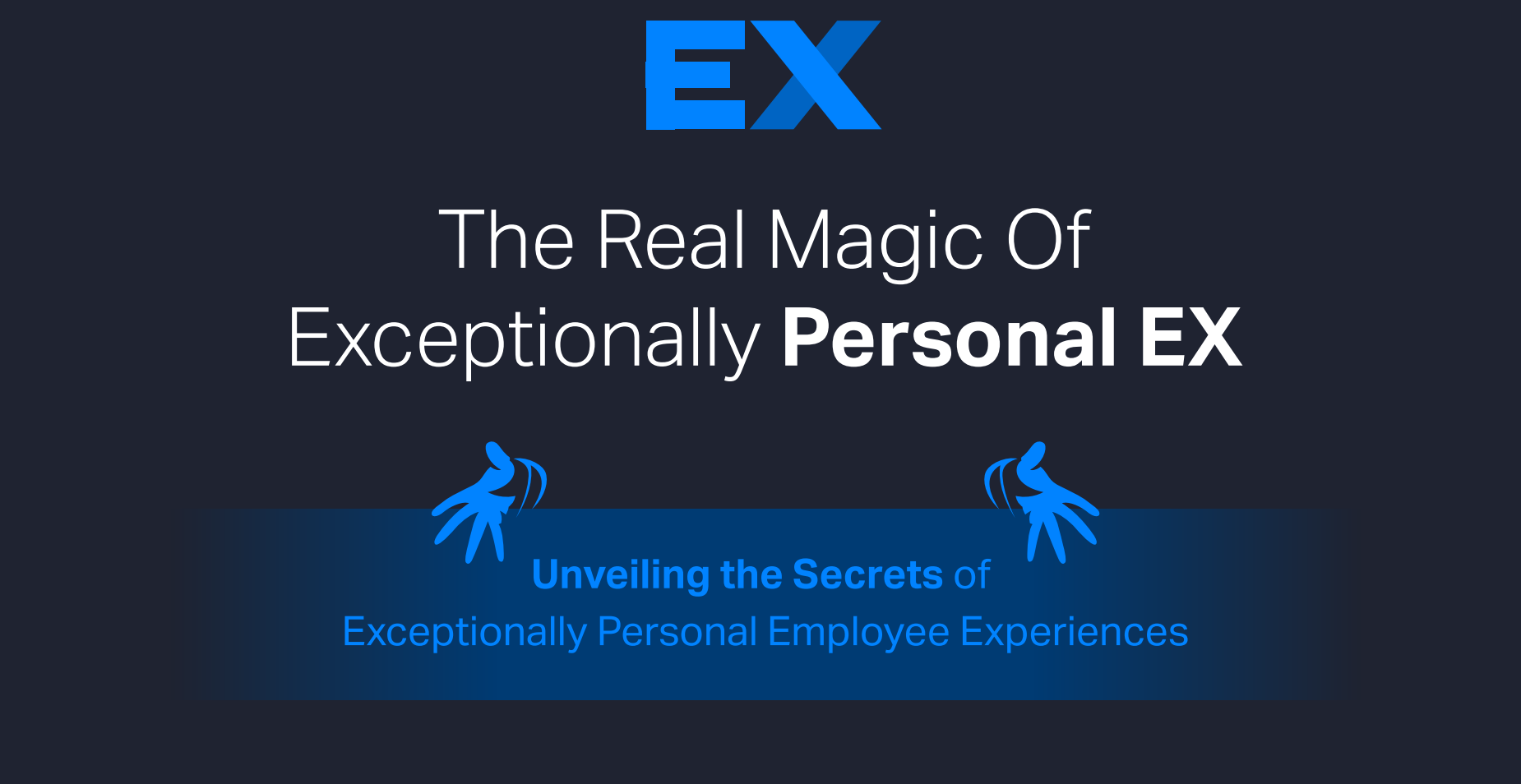 员工体验
员工体验
AI驱动的个性化员工体验—探索《24-25员工体验指南》的核心要点(附录下载)
在现代企业管理中,员工体验(Employee Experience, EX)已成为提升生产力和员工满意度的关键因素。《员工体验指南》 深入探讨了如何利用AI和HR技术实现个性化的员工体验,提供了一套系统的方法和实际案例,为HR从业者指明了方向。本文将从20个核心内容出发,全面介绍该指南的主要观点和实用建议。
1. 个性化员工体验的重要性
个性化员工体验旨在通过理解和满足员工的个体需求,提升他们的工作满意度和整体幸福感。指南指出,个性化体验不仅能带来更高的生产力,还能改善员工健康,促进公司更快增长。
2. 个性化EX的三大支柱:同理心、设计、参与
指南强调,同理心、设计和参与是实现个性化员工体验的三大支柱。这三大支柱共同作用,帮助企业打造独特且高效的员工体验。
3. 同理心的力量
同理心是理解和回应员工情感和需求的关键。通过定期的脉搏调查和幸福感调查,HR团队可以深入了解员工的真实感受,及时调整策略,满足员工的需求。
4. 设计的力量
设计是将员工需求转化为实际体验的过程。指南建议,HR技术应具备模块化、灵活和可扩展的特点,以便根据员工的个体需求进行定制化设计。
5. 参与的力量
参与是提升员工体验的重要环节。通过引入AI语音助手和聊天机器人等技术,HR互动变得更加流畅和直观,大大提升了员工的参与度。
6. 技术在个性化员工体验中的作用
现代HR技术在实现个性化员工体验方面发挥着至关重要的作用。技术不仅帮助理解员工的感受和需求,还能设计和提供个性化的解决方案。
7. AI驱动的工具和功能
指南详细介绍了AI驱动的工具,如情感分析、日常脉搏调查和幸福感调查,帮助HR团队收集和分析员工数据,以便更好地满足员工需求。
8. 实际应用案例
指南中提供了多个实际应用案例,展示了不同组织如何通过AI和HR技术实施个性化员工体验。这些案例包括不限带薪休假、个性化入职体验和集中查询解决方案等。
9. HR技术的设计原则
指南强调,HR技术应具备模块化、灵活和可扩展的特点,以便根据不同组织的具体需求进行调整和定制。
10. 增强员工参与度的方法
通过引入社交网络、AI语音助手等技术,HR团队可以提升员工的参与度,使员工能够随时随地访问最佳体验。
11. 奖励与认可计划
指南指出,AI驱动的奖励与认可计划可以显著提升员工的参与度和满意度。例如,每月75%的员工进行认可,进一步激发了员工的积极性。
12. 设置OKR绩效管理框架
指南建议企业设置OKR(目标与关键结果)绩效管理框架,以便更好地衡量和提升员工的绩效和参与度。
13. 个性化员工政策和流程
通过灵活的系统架构,HR团队可以实施独特的以员工为中心的政策,如不限带薪休假和弹性工作时间,以更好地满足员工的个体需求。
14. 倾听员工声音的方法
指南提供了多种倾听员工声音的方法,如员工调查、脉搏调查等,帮助HR团队深入了解员工的真实需求和感受。
15. 数据驱动的决策
通过收集和分析员工数据,HR团队可以做出更为准确和及时的决策,提升员工体验的效果和效率。
16. 提升员工幸福感的策略
指南中提到,通过理解和满足员工的个体需求,企业可以显著提升员工的幸福感和满意度,从而促进组织的长期发展。
17. 实施个性化体验的挑战和对策
虽然实施个性化员工体验面临一定的挑战,但指南提供了多种解决方案,如利用AI技术和模块化HR系统,帮助企业克服这些困难。
18. 长期战略规划
指南建议企业制定长期的战略规划,确保个性化员工体验的持续改进和优化,从而保持竞争优势。
19. 未来展望
个性化员工体验是未来HR管理的趋势。指南指出,通过不断创新和优化,企业可以实现更高的员工满意度和组织绩效。
20.参加员工体验奖项评选
参加员工体验奖项评选能显著提升企业声誉,展示企业文化与员工关怀,增强员工满意度与忠诚度,并吸引优秀人才加盟。参评过程不仅是一个学习与改进的机会,还能激励企业持续创新和优化员工体验管理水平,从而在行业内树立标杆,保持竞争优势。通过参评,企业不仅获得外界认可,也能为未来的发展注入新的活力和动力。
推荐下载《员工体验指南》
通过下载和阅读《员工体验指南》,HR从业者可以获得丰富的实用建议和成功案例,帮助他们更好地理解和实施个性化员工体验策略。
总结而言,《员工体验指南》为HR从业者提供了一套系统的方法和实用工具,通过AI和HR技术实现个性化员工体验。我们强烈推荐大家下载并阅读该指南,以获取更多关于如何提升员工体验的宝贵见解。
-
 员工体验
员工体验
构建全面的员工体验:人才管理系统如何提供帮助
现代劳动力正在经历重大变革。如今,员工渴望的不仅仅是薪水;他们寻求充实和丰富的工作经验。在当今竞争激烈的商业环境中,组织认识到他们最宝贵的资产是他们的员工。因此,提升员工体验已成为战略重点。员工体验的整体方法超越了传统的人力资源实践,包括身体、心理和情感健康以及敬业度和专业发展。这导致了整体员工体验 (HEX) 概念的兴起。HEX 超越了传统的人力资源实践,专注于员工的福祉、敬业度和成长。
实施HEX的一个关键工具是人才管理系统。强大的人才管理系统可以无缝集成健康和敬业度指标,为人力资源专业人员提供有关员工情绪和行为的宝贵见解。这种整合不仅培养了更健康、更敬业的员工队伍,还推动了组织的成功。
了解健康指标
健康指标是衡量员工健康和福祉各个方面的指标。这些指标可以包括身体健康指标(如活动水平、因病缺勤和生物特征筛查)、心理健康参数(压力水平、心理健康调查和获得心理健康资源的机会)和整体生活方式因素(工作与生活的平衡、参与健康计划和健康福利的使用)。
身体健康指标:这些指标包括定期健康检查、体重指数 (BMI)、身体活动水平和因病缺勤率。跟踪这些指标有助于组织及早发现潜在的健康问题并制定有针对性的健康计划。
心理健康指标:心理健康对于高效的员工队伍至关重要。压力水平、员工对工作量的反馈以及获得心理健康资源等指标提供了对员工心理健康状况的洞察。定期调查和匿名反馈机制可以有效地收集这些数据。
生活方式指标:工作与生活的平衡、参与健康计划以及健康和保健福利的使用是衡量员工整体幸福感的重要指标。跟踪这些指标有助于了解员工如何平衡他们的职业和个人生活以及健康计划的有效性。
了解参与度指标
员工敬业度是员工对其组织及其目标的情感承诺。敬业的员工更有效率、更具创新性和忠诚度。关键参与度指标包括:
员工满意度:定期调查和反馈机制,以衡量员工对其角色、工作环境和整个组织的满意度。
员工 NPS(净推荐值):衡量员工推荐其组织作为最佳工作场所的可能性。高分表明敬业度和忠诚度高。
离职率:高离职率可能是脱离接触的标志。在离职面谈的同时分析离职率可以深入了解潜在问题。
生产力指标:生产力和绩效数据可以表明员工的敬业度。高参与度通常与更高的生产力相关。
参与参与活动:跟踪团队建设活动、培训课程和其他参与计划的出勤和参与有助于衡量整体参与水平。
将健康和敬业度指标整合到人才管理系统中
当今的员工队伍在微妙的平衡中茁壮成长:员工福祉和敬业度。传统上,人才管理系统侧重于技能、经验和绩效。然而,将健康和敬业度指标整合到这些系统中,可以将人才管理效率提升到一个新的水平。原因如下:
全面了解您的员工队伍: 将人才管理系统视为指南针——它指导人才的获取、发展和保留。通过包括健康和参与数据,这个指南针变得更加全面。您可以深入了解员工满意度、压力水平以及工作与生活的平衡。这使您能够识别潜在的倦怠风险,制定有针对性的干预措施,并创造一个促进幸福感和生产力的工作环境。
改进人才招聘: 吸引顶尖人才取决于雇主品牌。整合健康计划表明了对员工福祉的承诺,使您的公司成为更理想的目的地。此外,通过结合技能组合分析健康数据,您可以改进招聘策略,以定位将在您的公司文化中茁壮成长的候选人。
提高员工敬业度: 敬业的员工显然更有效率、更具创新性和忠诚度。通过调查或脉搏检查跟踪参与度指标,您可以确定需要改进的领域。员工是否感到被低估了?工作负载分布是否不均衡?通过有针对性的计划和沟通来解决这些问题,可以培养一种参与文化,从而使员工队伍更快乐、更高效。
及早识别风险: 员工的幸福感直接影响绩效。整合旷工、出勤(身体在场但精神上不参与)和健康索赔数据等指标可以帮助及早发现潜在问题。这允许采取主动干预措施,例如压力管理研讨会或提供灵活的工作安排。
数据驱动的决策: 人才管理决策通常基于直觉。整合健康和参与数据为明智的选择提供了数据驱动的基础。例如,分析不同部门敬业度得分的趋势可以揭示领导风格或团队结构的有效性,从而进行有针对性的调整。
建立幸福感和敬业度的文化
整合这些指标只是第一步。要真正受益,请创造一种优先考虑福祉和参与的文化。这包括:
领导承诺:倡导福祉计划的领导者为组织定下了基调。
开放式沟通:培养一种文化,让员工能够自在地表达与工作量、压力或工作与生活平衡有关的担忧。
工作与生活平衡计划:提供灵活的工作安排,提供心理健康资源,并鼓励员工休息和断开连接。
认可和奖励:表彰和奖励那些表现出高度敬业度和对福祉的承诺的员工。
通过将健康和敬业度指标整合到您的人才管理系统中,并营造一个支持性的工作环境,您可以创造一个双赢的局面。您的员工茁壮成长,您的组织蓬勃发展,您在吸引和留住顶尖人才方面获得了竞争优势。
设计整体员工体验框架
整体员工体验框架使健康和敬业度目标与组织目标保持一致。关键组件包括:
健康和敬业度文化:培养一种优先考虑员工福祉和敬业度的文化。这包括领导层的承诺、开放的沟通和支持性的工作环境。
与组织目标保持一致:确保健康和参与计划支持更广泛的业务目标。这种一致性有助于确保领导层的支持并展示这些计划的价值。
员工参与:让员工参与健康和敬业度计划的设计和实施。员工的意见确保计划具有相关性并满足他们的需求。
持续改进:根据反馈和数据分析定期审查和更新计划。持续改进方法可确保计划保持有效性和相关性。
使用数据分析推动调查
数据分析在理解和改善员工体验方面发挥着至关重要的作用。
高级分析可以:预测分析:使用历史数据来预测未来趋势,例如潜在的人员流动风险或健康计划对敬业度的影响。
相关性分析:确定不同指标之间的相关性,例如身体健康与生产力或心理健康与敬业度之间的关系。
细分分析:按人口统计、工作角色或部门对数据进行细分,以确定特定需求并相应地定制计划。 可视化工具:利用仪表板和可视化工具以易于理解的格式呈现数据。视觉洞察力有助于快速决策和战略规划。
个性化员工体验
个性化是有效的员工体验战略的关键。量身定制的计划更能引起员工的共鸣,并提高敬业度和满意度。个性化策略包括:
个人健康计划:根据员工的健康数据、偏好和目标制定个性化的健康计划。提供多种健康选择,以满足不同的需求。
定制学习与发展:使用人才管理系统数据创建个性化的学习路径,以满足员工的职业抱负和技能发展需求。
有针对性的参与计划:设计反映不同员工群体的兴趣和偏好的参与活动。个性化的参与工作可以提高参与度和影响力。
实施的最佳实践
实施全面的员工体验战略需要仔细规划和执行。最佳做法包括:
领导承诺:确保领导层承诺支持健康和参与计划。领导层的支持对于推动文化变革和资源分配至关重要。
跨职能协作:让多个部门(包括 HR、IT 和运营)参与实施过程。协作确保了全面的程序设计和有效的执行。
清晰的沟通:向所有员工清楚地传达健康和敬业度计划的目标、好处和流程。透明度可以建立信任并鼓励参与。
试点计划:从试点计划开始,测试新计划并收集反馈。试点允许在全面推出之前进行调整,从而增加成功的可能性。
持续反馈循环:建立员工持续反馈的机制。定期反馈有助于完善计划并及时解决问题。
监控和评估成功
定期监测和评估对于确保健康和参与计划的有效性至关重要。
设定 KPI:定义关键绩效指标 (KPI) 以衡量健康和参与计划的成功。KPI 应与组织目标和员工期望保持一致。
定期审查:根据 KPI 对计划绩效进行定期审查。使用数据来确定需要改进的领域并进行必要的调整。
员工反馈:通过调查、焦点小组和直接沟通不断收集员工的反馈。员工的意见对于了解计划的真正影响至关重要。
影响分析:分析健康和敬业度计划对员工体验和业务成果的长期影响。这种分析有助于展示投资回报率并获得持续的支持。
员工体验与人才管理体系的未来趋势
随着组织不断认识到员工体验在推动业务成功方面的重要性,人才管理系统的前景正在迅速发展。一些新兴趋势将塑造员工体验和人才管理系统的未来,整合先进技术并应对工作场所不断变化的动态。
人工智能和机器学习
人工智能 (AI) 和机器学习 (ML) 正在改变组织管理人才的方式。这些技术支持预测分析,可以预测员工绩效,识别潜在的离职风险,并根据个人需求定制发展计划。人工智能驱动的洞察力允许做出更明智的决策和个性化的员工体验。例如,人工智能可以分析员工敬业度数据,以预测哪些员工可能面临倦怠风险,并推荐主动干预措施。机器学习算法可以不断从员工数据中学习,以随着时间的推移完善和改进人才管理策略。
与可穿戴设备和物联网集成
可穿戴技术和物联网(IoT)与人才管理系统的整合是另一个重要趋势。可穿戴设备可以提供有关各种健康指标的实时数据,例如身体活动、睡眠模式和压力水平。这些数据可以集成到人才管理系统中,以创建个性化的健康计划并持续监控员工的幸福感。例如,可穿戴设备可以提醒人力资源经理可能需要支持或干预的员工,从而促进积极主动的健康和保健方法。这种整合有助于培养幸福文化,并确保员工身心健康。
加强对心理健康的关注
心理健康已成为员工体验的重要组成部分。随着意识的提高,组织越来越多地将心理健康支持整合到其人才管理系统中。未来人才管理系统将提供全面的心理健康资源,包括咨询、压力管理工具和心理健康日。高级分析将有助于跟踪员工队伍中的心理健康趋势,从而及时和有针对性地进行干预。雇主将优先考虑创造一个支持性环境,公开讨论心理健康,并且资源随时可用。
远程工作和灵活性
COVID-19 大流行加速了远程工作的兴起,重新定义了传统的工作环境。人才管理系统平台正在不断发展,以支持分布式劳动力的需求。虚拟入职、远程培训和数字绩效管理等功能正在成为标准。此外,人才管理系统将促进灵活的工作安排,允许员工选择工作方式和地点。这种灵活性对于在竞争激烈的市场中吸引和留住顶尖人才至关重要。组织将利用技术来确保远程员工保持参与和联系,尽管物理距离遥远,但仍能培养社区意识。
全面的员工体验平台
未来将出现全面的员工体验平台,这些平台整合了人才管理系统、健康和敬业度的各个方面。这些平台将提供一种无缝、全面的方法来管理员工体验。他们将把绩效管理、学习和发展、健康计划和参与计划结合到一个统一的系统中。这种集成简化了管理流程,并为员工提供了一致且有凝聚力的体验。先进的平台将提供个性化的仪表板,使员工能够在一个地方跟踪他们的进度、访问资源并参与公司计划。
持续反馈和实时分析
未来的人才管理系统将强调持续的反馈机制和实时分析。传统的年度绩效评估正在被持续的反馈循环所取代,从而可以进行更及时和相关的绩效讨论。实时分析将使管理人员能够持续监控敬业度和生产力,从而更轻松地解决问题。这种向持续反馈的转变促进了一种成长和改进的文化,员工定期获得有关其绩效的反馈,并有机会发展。
实施全面的员工体验战略,将健康和敬业度指标整合到人才管理系统中,是现代组织的战略要务。通过了解和衡量健康和敬业度、利用数据分析、个性化体验和遵循最佳实践,组织可以创造一个支持性和参与性的工作环境。这种方法不仅可以提高员工的幸福感和满意度,还可以通过培养积极进取、高效和忠诚的员工队伍来推动组织的成功。
 扫一扫 加微信
hrtechchina
扫一扫 加微信
hrtechchina
 员工体验
员工体验
 员工体验
员工体验
 员工体验
员工体验
 员工体验
员工体验
 员工体验
员工体验
 员工体验
员工体验
 员工体验
员工体验
 员工体验
员工体验
 员工体验
员工体验

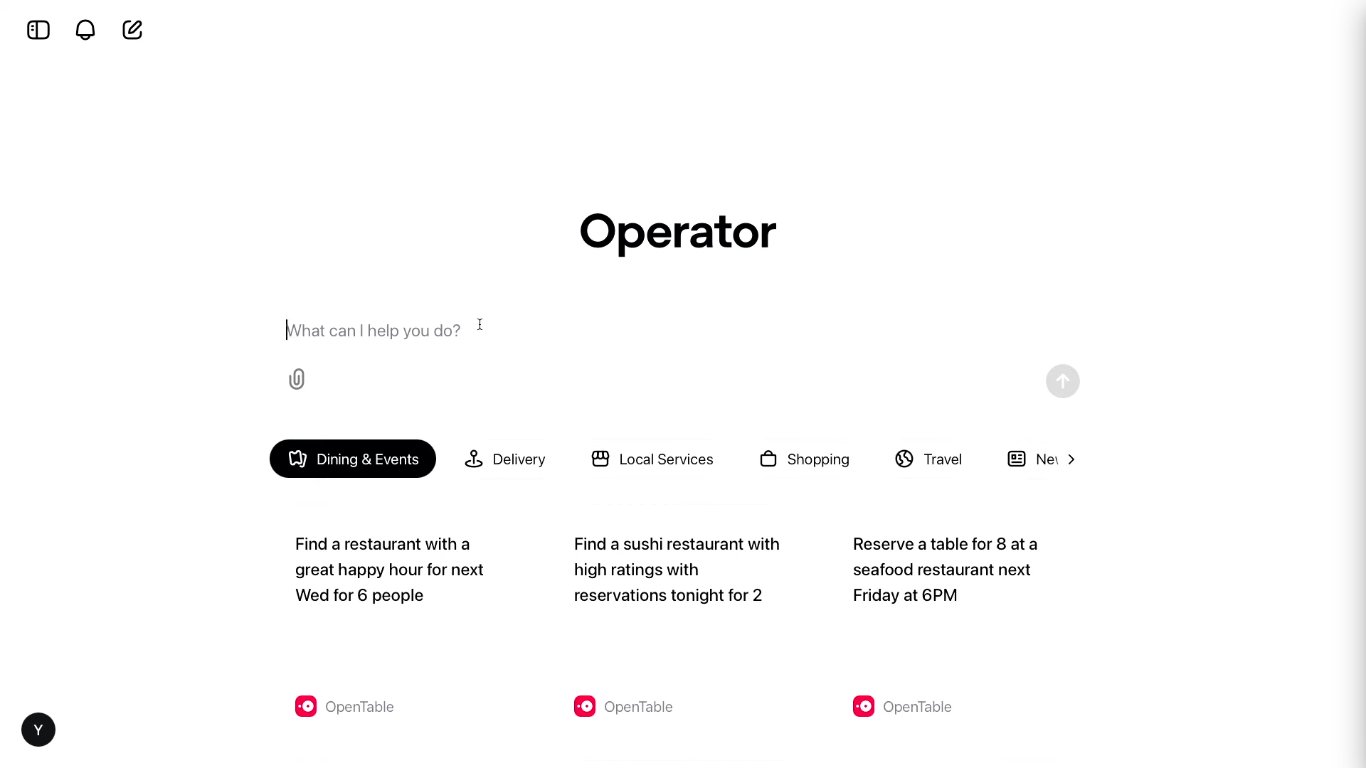
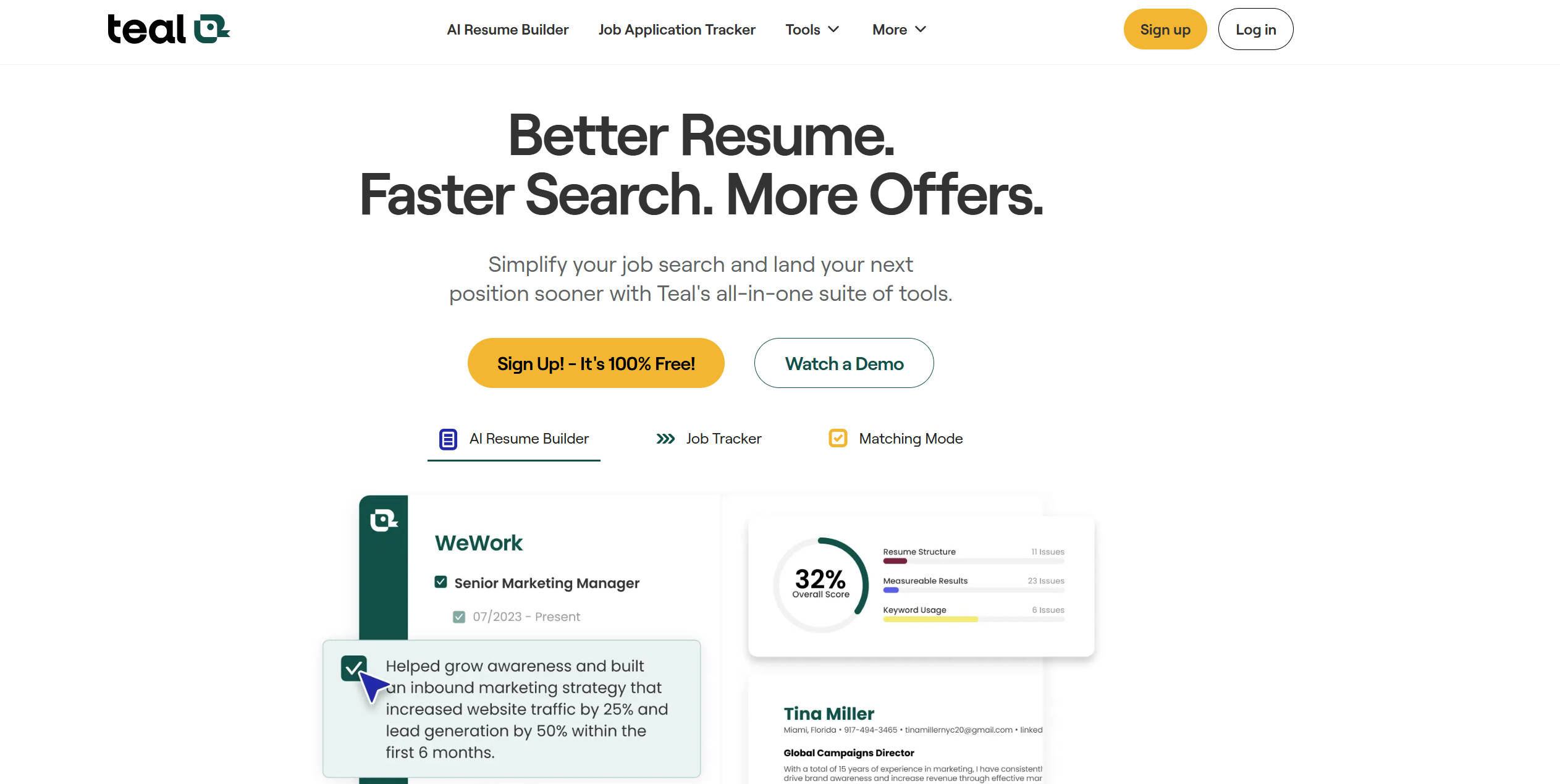
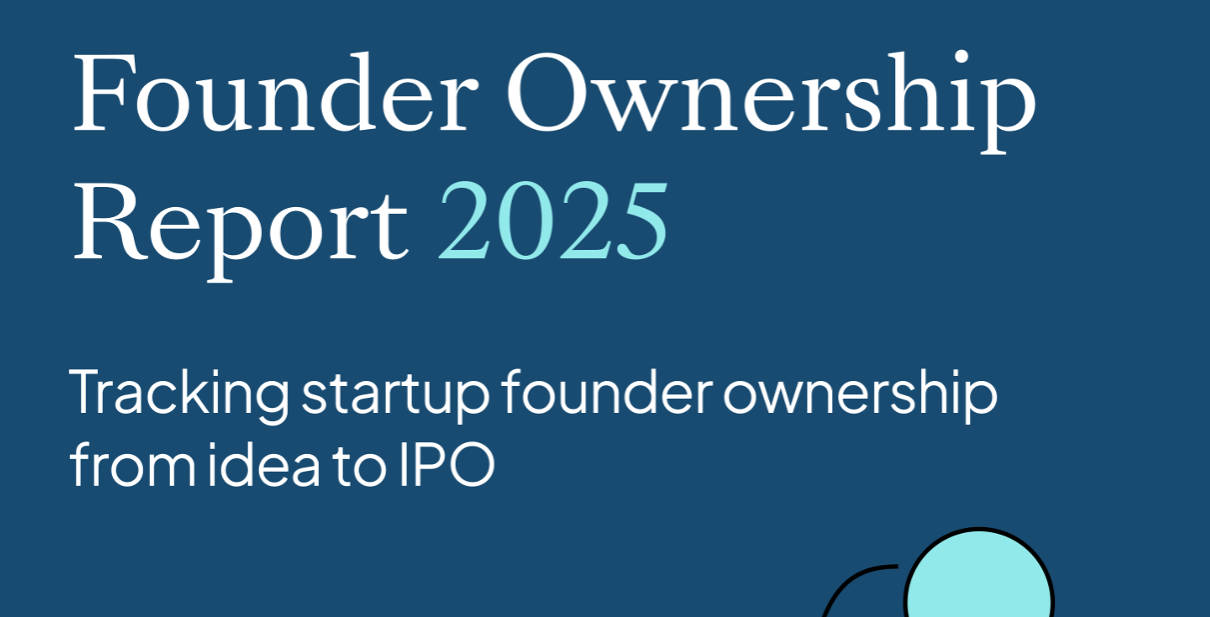

 扫一扫 加微信
hrtechchina
扫一扫 加微信
hrtechchina



